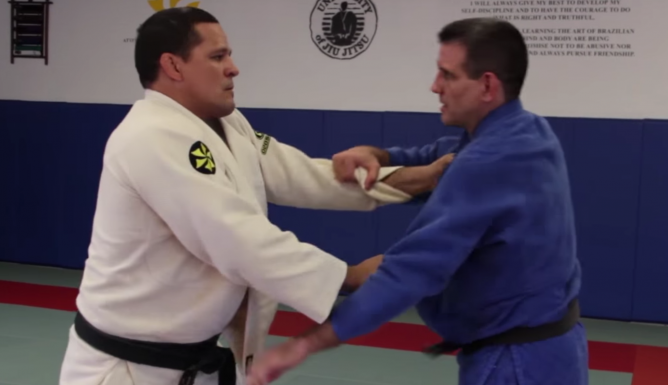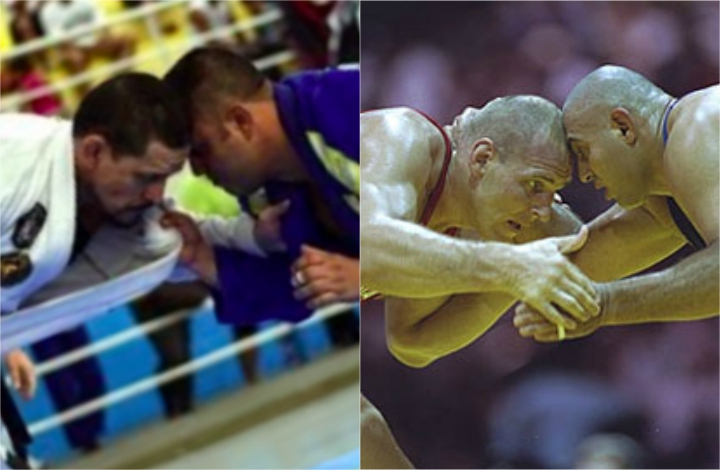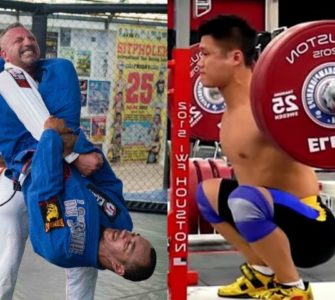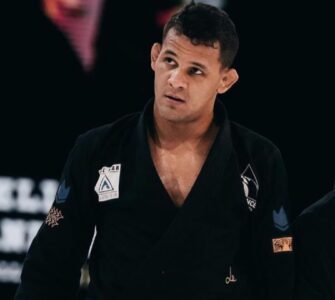Guest post by Neil Adams MBE, an English judoka who won numerous Olympic and World Championship medals in judo representing Great Britain. Adams was the first British male to win a World title, and the first British male to simultaneously hold a world title and a European title. Other achievements include a gold medal at the 1981 World Judo Championships in Maastricht, the Netherlands, plus silver medals in the 1980 and 1984 Summer Olympic Games and the 1983 Judo World Championships. Adams was also five-time European Champion. On 20 September 2008 he was promoted to 8th Dan at the age of 49. He is famous for his ground game (ne waza) and his arm lock (that won him the world championship).
Adams has released a new series of Judo instructional entitled ‘Essential Judo‘ which is a revolutionary & highly detailed way of teaching the art of Judo.
Most of you who have followed my career throughout the years know I take most of my throws to the Right. Does this make me a right-handed player?
What you may not know is that I write with my left and as you’ll see in the Superstar segment, I dribble a basketball and play many sports with my left. But not all. It does come down to what & how you were taught the skill and a little bit of what feels correct.
This brings us to the age-old debate of how we should teach students. Should we teach them the way we demonstrate, (which most coaches I’m hazarding a guess that this is with the Right stance) and then teach them the other side after they have mastered that?
Lots of questions. And really there always will be, for as long as scientists are exploring the powers of the brain and along with it the right/left brain with left/right functioning, we are always going to be changing views.
If you have watched the Superstar video with my short Kumi Kata explanation, you will see my answer to this complex problem and try to simplify it in terms of not teaching Right or Left.
When I was creating my video teaching resource, Judo Excellence, I purposely did not want to use the terms of Right & Left. Instead, I have given the hands and arms a job or function to perform.
The names I have given reflect the job prescribed:
Control Hand (sleeve hand) and
Direction Hand (Lapel Hand).
When using this terminology, it doesn’t matter which way we are turning, as long as the hand is doing its job in synch with the technique.

Saulo Ribeiro pictured here with Jimmy Pedro, leads with his left arms even though he is right handed.
This is why for beginners, I don’t place their hands in position. I ask them to grab the sleeve. This then shows me what feels comfortable for them. Then I introduce its function, “This is the Control Hand. It controls the pull and arching motion of the throw. The throw will follow this arc and pathway.”
I then ask them to grab hold of the opposite lapel. Same idea here, “This is the Direction Hand. It manoeuvres, pushing or pulling, your partner into position and directs their weight over the balance lines into a position to throw.” (Balance Lines are a lesson for another day!)
So you see, there is no right or wrong (pun intended).
The advantage, competitively, lies in how you use it. I really disliked fighting extreme left stances. However, this got me to think of different ways of moving my partner into a line of attack that suited me more, rather than just flinging myself at them hoping for the best. This is how my kumi kata excelled, as I had to study, again, how to move my partner efficiently and effectively into a position most profitable for an Ippon result.
I also started studying throws to the other side so as I could understand them more. If I had trouble with a throw and couldn’t work out why, I would try it to the other side in my skills session at the Budokwai with my training partner, Ray Stevens. This made me break it down, study the nuances of the technique and then build it back up again. The answer almost always was tucked away in one of these tiny details. I would then have the technique fairly proficient on both sides of attack. And THIS, is what gives any competitor the advantage. The ability to come out of no-where and everywhere; the adaptability to have a Plan A, Plan B, Plan C and so on.
Adaptability is the key to success, but again, that’s for another day.


















